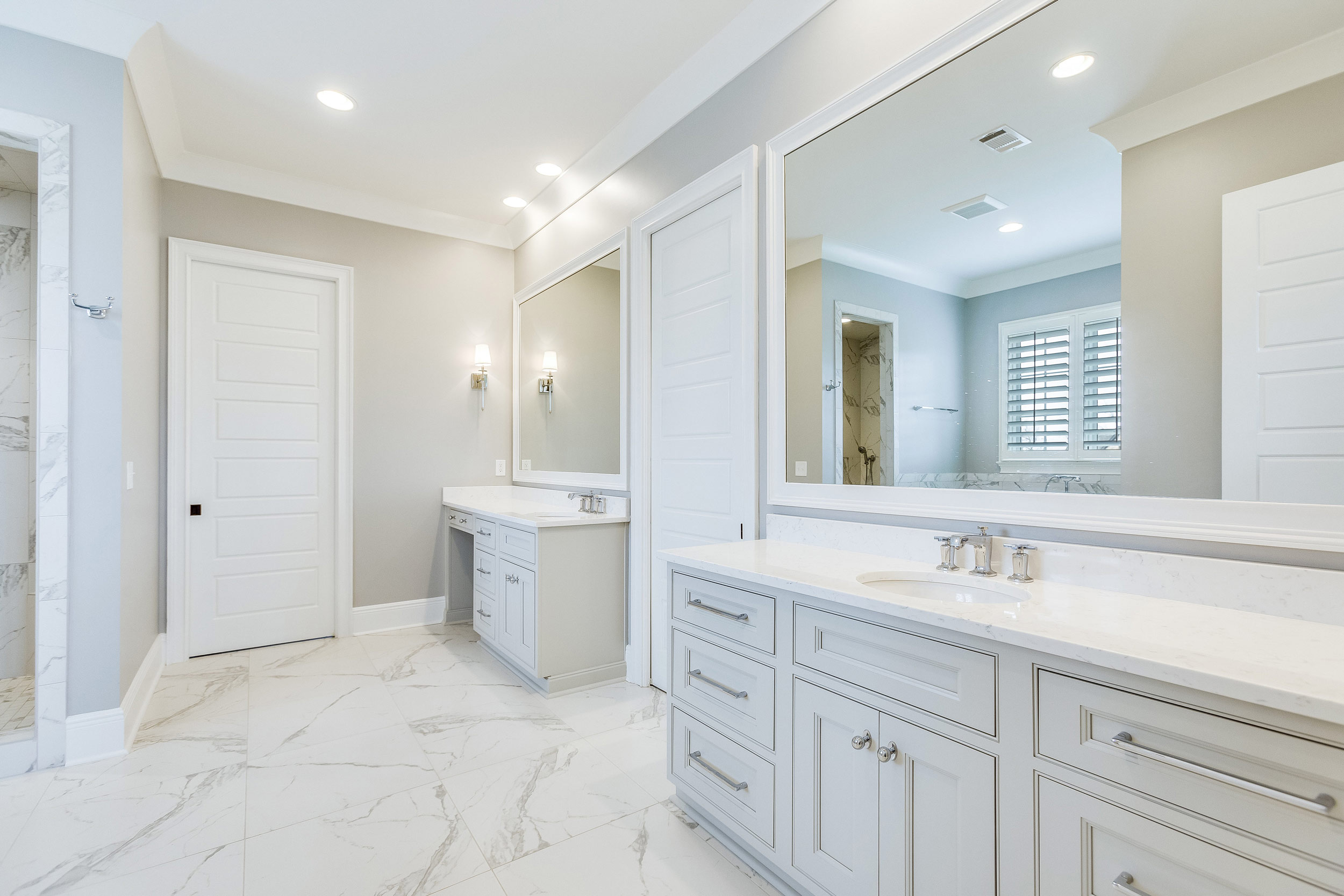Bathroom Lighting Fixtures, Illumination, and Placement When Remodeling
Learn How To Achieve The Best Bathroom Lighting
The modern bathroom has transformed into a luxurious retreat that's the perfect place to get ready to greet your day or to relax and unwind after a long day. One of the key elements to creating the ideal oasis is your choice of lighting fixtures, illumination, and placement.
Download Our Bathroom Remodeling Cost Guide
Proper lighting can make your bathroom comfortable, functional, and beautiful. If fact, it can set the mood for the entire room. A lighting design is a critical element of a bathrooms overall style and is typically left to design professionals. Lighting is more complex than choosing simply a fixture.
Considering how important it is, bathroom lighting doesn't often get the attention it deserves. From bad overhead lighting to shades that casts shadows, choosing the wrong lighting can make your bathroom less than enjoyable.
Here are some tips to help you choose the best bathroom lighting fixtures, illumination, and lighting placement for your next bathroom remodeling project.
The Three Types of Bathroom Lighting
When it comes to the bathroom, there are three types of lighting that designers use when creating a proper layered bathroom lighting design.
They are:
Ambient Lighting
This is general lighting that illuminates the whole space. Most often some form of ceiling light is used. Putting the light on a dimmer can help to set the mood.
Task Lighting
Focused lighting for specific tasks, for example, vanity lighting, or a reading light near the tub.
Accent Lighting
Additional lighting used to illuminate a dark corner or highlight architectural features or artwork.
Bathroom designers will combine these various types of lighting to create a design that is highly functional and aesthetically beautiful. Of course, depending on the size of the room, for example, a small powder room or guest bath, they may only use ambient lighting. For a more spacious bathroom, like in the master suite, your designer may use all four types of lighting to serve the space better.
Types of Bathroom Lighting Fixtures
There are many different light fixtures and a wide variety of styles available to homeowners and designers.
Here are some of the most popular examples.
Ceiling Lights
Ambient lighting in the bathroom is most often served by using ceiling or overhead lighting. Upgrading your flush-mounted lighting with an elegant chandelier, or hanging pendant can often give your space an immediate upgrade.
If you're mounting a fixture in or near the shower, make sure you opt for either a UL damp or wet-rated fixture. Damp-rated light fixtures are best over the sink or as the main overhead light. Wet-rated light fixtures are for in the shower or above the bath.
Vanity Lighting
Typically, task lighting is used in the vanity area. This type of lighting is the most natural, can give you an accurate read of color, and casts no shadows when getting ready in the morning. Think wall sconces on either side of the mirror. To make a real design statement, consider hanging two small pendants on either side of the mirror instead of the more traditional sconces.
For the best results, place lights on either side of the mirror, about 65-inches from the floor, and a couple of inches from the mirror. If you choose a single light above the mirror, opt for one that hangs at least two inches past the mirror's edge, and mount it about 80-inches from the floor.
Accent Lighting
While accent lighting is typically found in larger rooms like living or dining rooms., many bathrooms and powder rooms can incorporate dry-rated fixtures as accent lighting. Consider adding two low wattage sconces somewhere in the room, or add a little table lamp to an empty counter space.
Other Factors to Consider When Designing A Bathroom Lighting Plan
While the lighting fixtures play a large role in the design of your bathroom, there are other factors to consider that can help to better create the lighting you want in the space. Dimmers can be used to add a subtle, inviting mood. They can also provide less harsh light for those late-night trips to the bathroom.
Another major factor to consider is the type and wattage of lighting used in the space. For vanity lighting, two 60-watt bulbs can provide excellent illumination for applying makeup. In a small bathroom or powder room where you don't need as much light, a 40-watt lamp might be perfect. If you're looking for a sustainable, long-lasting option, the latest dimmable LED technology allows you to choose the brightness, light appearance (color, cool or warm light), and color accuracy.
Your designer or design-build contractor can help you to understand all of your options better when it comes to designing your bathroom lighting. Creating an effective lighting design for your bathroom can make it more relaxing, comfortable, functional, and aesthetically beautiful.
If you're planning a bathroom remodeling project in the Tuscaloosa, Alabama area, give the experts at Toulmin Kitchen & Bath a call at (205) 366-0807. Their design team can help you to create your dream bathroom, right down to the lighting!

